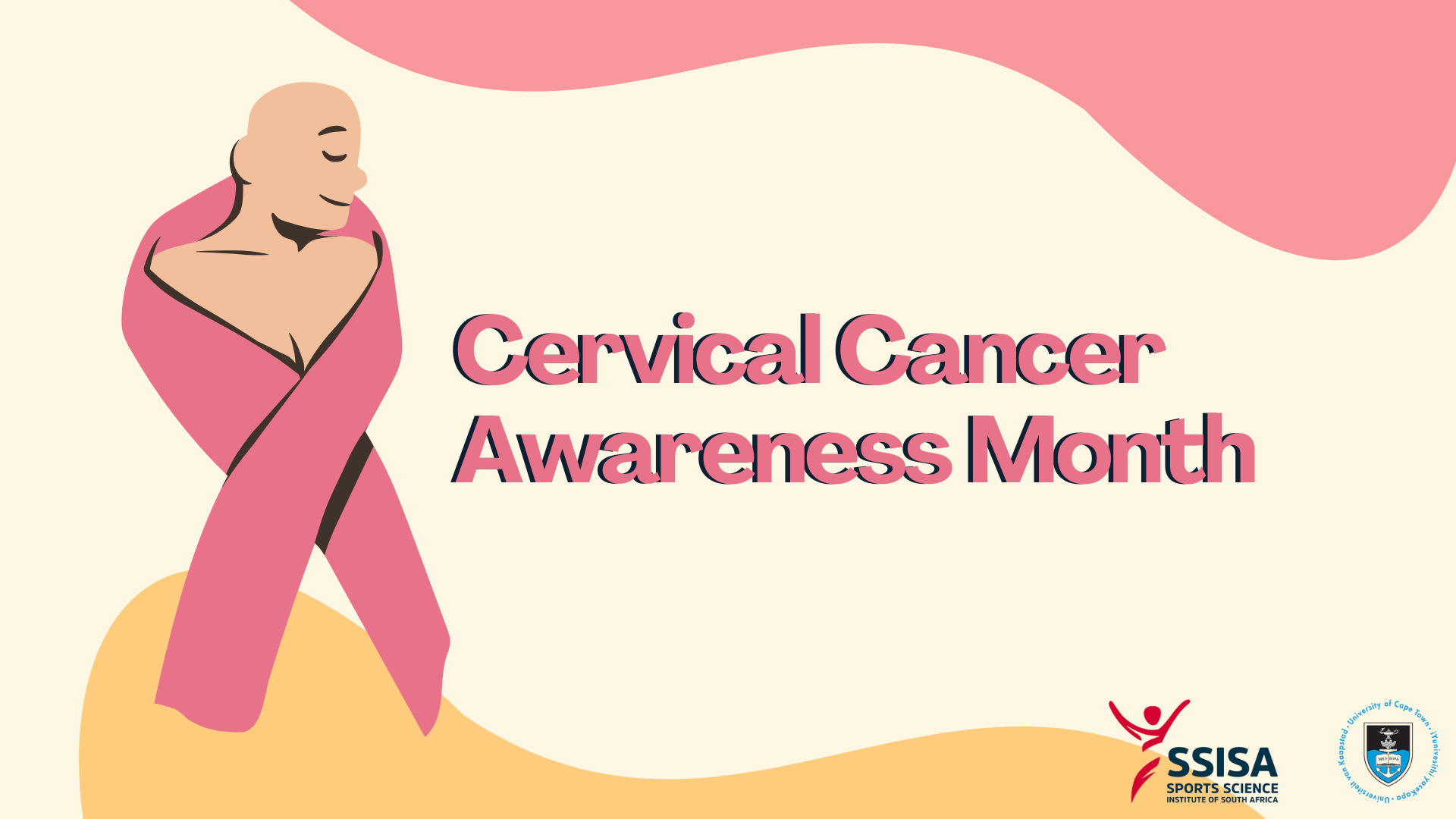Cervical Cancer Awareness Month
In this blog post, we will delve into what cervical cancer is, its causes, signs and symptoms, prevention strategies, and how it is detected. We will also discuss some of the latest research on the HPV vaccine.

Cervical cancer is a significant public health concern worldwide and is the second most common cancer amongst women in South Africa (1). As per Statistics South Africa (StatsSA, 2020), Cervical Cancer is recorded as the 4th most common cancer in women, globally. Even though Breast Cancer is recorded as most common, Cervical Cancer is the most common in 23 countries and documented as a leading cause of cancer deaths in 36 countries.
This type of cancer affects the cervix, the narrow lower portion of the uterus that connects to the vagina. The malignancy that originates in the cervix's cells, is most commonly caused by persistent infections with high-risk strains of the human papillomavirus (HPV) (1). HPV is one of the most common sexually transmitted diseases in both men and women worldwide (2). HPV is a group of viruses, with over 30 varieties that can infect the genital tract. Some of these HPV strains are associated with a higher risk of causing cervical cancer. Over time, these infections can lead to changes in the cervical cells, potentially progressing to cervical cancer. HPV infections are widespread, but most are benign and resolve on their own without causing harm (2). However, persistent infections with high-risk HPV types, such as HPV-16 and HPV-18, can lead to cervical cell abnormalities and eventually cancer if left untreated (3). It has been reported that 99% of cervical cancers are associated with repeated HPV infections (1)
Cervical cancer often develops without causing noticeable symptoms in its early stages. As the disease progresses, some common signs and symptoms may include abnormal vaginal bleeding, pelvic pain, unexplained weight loss and unusual discharge. Preventing cervical cancer primarily revolves around HPV vaccination and regular cervical cancer screenings, including Pap smears and HPV DNA tests. The HPV vaccine is highly effective in preventing infections with the most common high-risk HPV strains (3). It is recommended for both males and females, typically starting in adolescence (4). The primary age for women to get the vaccine is between 9 -14 years old, before they become sexually active, undergoing a schedule of 2-3 vaccines. The efficacy of such vaccines has been reported as remarkably high (4). Although effective, regular screening for the virus and precancerous changes are the cervix are still advised (2,4).
Regular screenings, such as Pap smears (Pap tests) and HPV DNA tests, are crucial for early detection. Pap smears can identify precancerous changes in cervical cells, allowing for intervention before cancer develops. Early detection of cervical cancer and its precursors is essential for successful treatment. During a Pap smear, a healthcare provider collects a sample of cells from the cervix and examines them for precancerous abnormalities (5). Abnormal Pap smear results may lead to further testing. Additionally, an HPV DNA test is done. This test checks for the presence of high-risk HPV strains in cervical cells. These tests are often used in conjunction with a Pap smear and can help identify women at higher risk of developing cervical cancer. If abnormalities are detected in the initial tests, a colposcopy may be performed, during which the cervix is examined more closely using a magnifying instrument. If necessary, a biopsy may be taken to confirm the presence of cancerous cells. It is recommended that all sexually active women go for annual pap tests to help prevent the development of cervical cancer (1–3,5). Pap tests can be performed by most nurses and general practitioners and several South African medical aids (Discovery, Momentum, Bonitas, Medihelp, Gems, etc) pay for annual pap tests.
Understanding cervical cancer, its causes, symptoms, and prevention measures is crucial for women's health. Regular screenings and HPV vaccination are key tools in the fight against cervical cancer, allowing for early detection and effective treatment. By staying informed and taking proactive steps, we can reduce the impact of this disease on women's lives.
References:
- Western Cape Government. 2020. Cervical Cancer.
- Burd EM. Human papillomavirus and cervical cancer. Vol. 16, Clinical Microbiology Reviews. 2003. p. 1–17.
- World Health Organisation. Cervical Cancer. 2021.
- Kamolratanakul S, Pitisuttithum P. Human papillomavirus vaccine efficacy and effectiveness against cancer. Vol. 9, Vaccines. MDPI; 2021.
- National Cancer Institute. Cervical Cancer Treatment. 2021.

